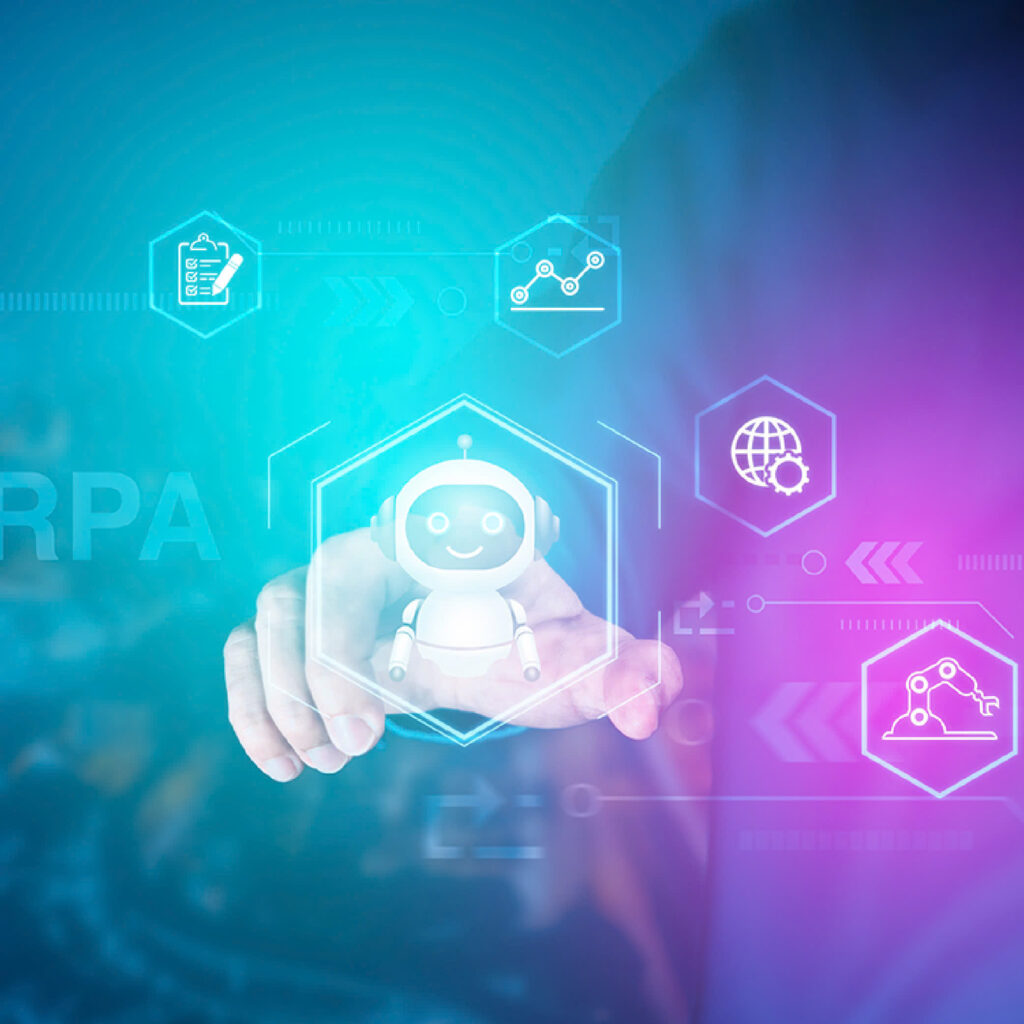
AI automation is accelerating business productivity across functions. It helps marketers automate repetitive and time-consuming tasks, analyze large data sets quickly, and even create personalized campaigns. But most importantly, AI enables marketers to focus on strategic and creative activities. When marketers focus on value-adding tasks instead of getting caught up in the mundane, it drives overall business growth for the organization. So, how can marketers utilize AI to automate tasks and focus on value-adding activities? By reducing redundancies in processes. Here are a few steps that marketers can follow to leverage AI automation for workflow streamlining:
Analyze the workflow: The first step to leverage AI-driven automation is understanding the existing workflow. This step involves mapping out all the processes and identifying repetitive and time-consuming tasks. For example, customer queries are often similar and chatbots can be used to answer them. By determining such tasks, marketers can integrate AI into the workflow to save time and reduce manual effort.
Select the tools: Choosing the most suitable AI tools and platform is crucial for workflow streamlining. Here’s what you should consider when selecting the AI solutions:
- Alignment with business needs: Begin by understanding the requirements of the campaign. The AI solutions should address the specific needs and requirements or facilitate you in achieving a goal. Moreover, as the business grows, the AI tool should be able to adapt to the increased workload without interruptions.
- Feasibility: Next, assess whether the existing infrastructure can support the new AI technology. This step includes evaluating whether the AI solutions work well with the existing software and platforms. The selected tools should integrate seamlessly with the current systems and processes. Moreover, consider the financial investment and skill requirement while assessing the feasibility of the new tech.
- High ROI: Conduct a cost-benefit analysis to select the AI tools that offer the highest return on investment. The best way to do so is to look for tools with a proven track record of delivering measurable results. Review testimonials and case studies to estimate the value-addition of the AI tool in your business.
Test on a small scale: Before rolling out on full scale, test the AI solutions on a smaller scale. It will help you identify potential problems and make necessary adjustments well in time. For example, before rolling out a chatbot company-wide, test it with one department’s operations. This approach will help you gain feedback, measure performance, and fine-tune the system for optimal results. In the long run, this will also help you save a lot of money.
Continuously evaluate the risks associated with AI, including:
- Monetary: Track the investment in the AI solution to ensure it is not bleeding money for the organization. This step involves continuous cost and budget assessments to check that the AI is delivering the expected benefits monetarily.
- Security: Be aware and plan for cyber threats associated with AI. Thoroughly research and investigate AI tools and how they use the data before integrating them into the system. Moreover, implement robust cybersecurity measures to protect sensitive data from breaches.
- Privacy: Ensure responsible handling of user data. The AI-driven business operations should adhere to data regulations such as GDPR. Transparency in data usage and compliance with applicable laws and regulations is essential.
- Bias: AI should ideally be free of biases for optimal decision-making. Ironically, you need humans to do so. Monitor for any AI biases and take steps to mitigate them. This step includes using diverse training data and regularly auditing AI to ensure fairness.
Train employees: Provide comprehensive training sessions to help the team understand and utilize the AI tools. This step includes hands-on training, workshops, and continuous up-skilling. Additionally, gather the employees’ feedback. It is crucial to ensure that the humans behind the marketing feel valued and not replaceable.
Monitor and optimize: Continuous monitoring and optimization are essential to maintaining the effectiveness of AI-driven workflow. Gather inputs from all stakeholders, including employees, customers, and others, to assess performance and make iterative improvements based on feedback and performance data to ensure the system remains efficient and effective.
Maintain human oversight: While AI can streamline many tasks, effective AI implementation requires well-trained human oversight. To do this, you must ensure diversity in the team overseeing the AI to bring varied perspectives and reduce bias. A diverse team will be better at identifying potential issues and ensuring ethical AI usage. But remember: AI should assist in decision-making, not replace human judgment.
Before wrapping up, let’s look at some common mistakes marketers make while utilizing AI tools for workflow streamlining and how to avoid them:
- Excluding humans: Remember that the goal is to optimize processes, not replace humans. Keep humans involved in decision-making processes to ensure a balanced and ethical approach. Relying solely on AI without humans can lead to inefficiencies and ineffectiveness.
- Misalignment with business needs: The AI solutions should be a good fit. Choose AI solutions specifically designed to meet the business requirements. This step can take some trial and error. Be prepared for multiple failures and lessons before you get it right.
- Relying on a single tool: Don’t rely on a single AI tool or model. Consider multiple AI tools and, if possible, combine them for better optimization. This approach can help find more robust and comprehensive solutions.
- Ignoring data quality: Use only high-quality data to train AI models. Poor data quality can lead to biases and unreliable output. Regularly audit and clean data to ensure accuracy and relevance in data processing. It will also help you derive better insights from the available data.
AI automation offers significant productivity gains and efficiency improvements. The right tools can allow marketers to focus on value-addition and strategic tasks. It can drive unprecedented growth and efficiency in marketing campaigns and overall business operations. However, even with automation, human oversight throughout the implementation is crucial to ensure ethical and balanced outcomes.



















